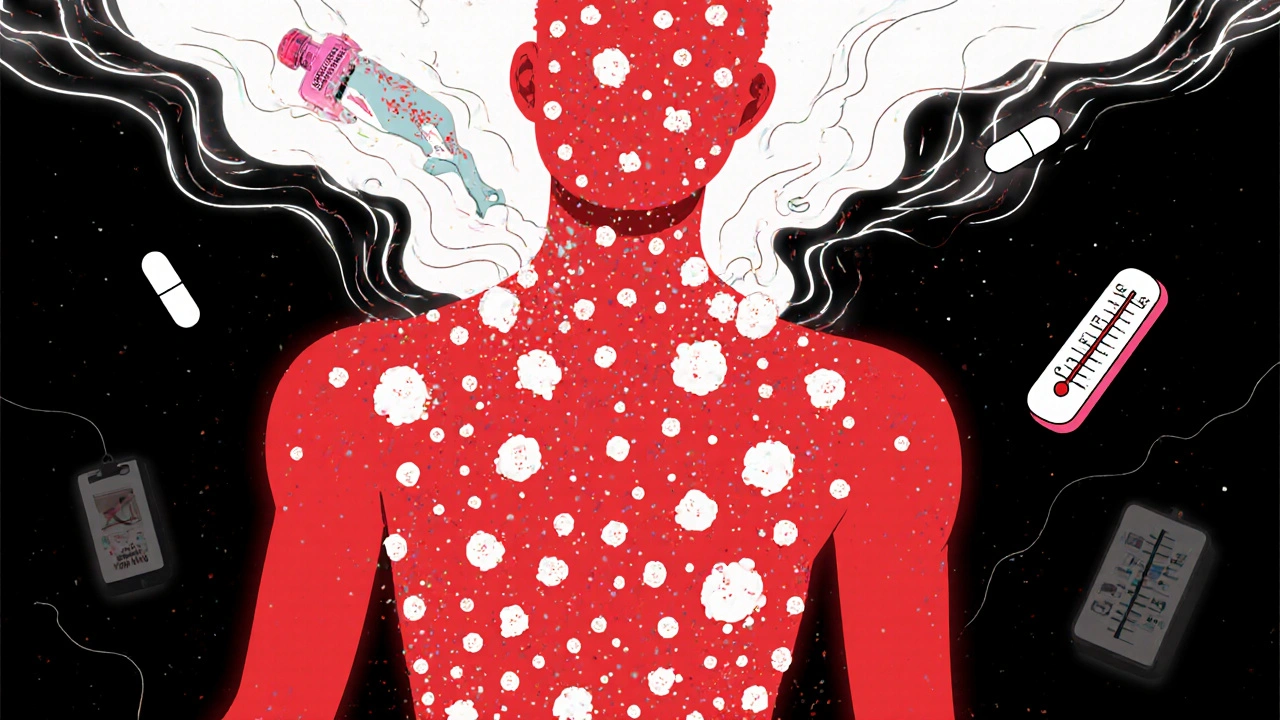Pustular Rash: Causes, Treatments, and What You Need to Know
When your skin breaks out in small, pus-filled bumps, you’re likely dealing with a pustular rash, a skin condition marked by raised, inflamed bumps containing white or yellowish fluid. Also known as pustules, this type of rash isn’t just cosmetic—it’s often a signal that something deeper is going on in your body. Unlike regular acne, pustular rashes can appear suddenly, spread quickly, and come with fever, pain, or intense itching. They’re not contagious by themselves, but they can be triggered by infections, medications, or immune system overreactions.
One of the most common causes is drug reaction, a skin response to medications like antibiotics, antifungals, or even blood pressure pills. Drug-induced pustulosis can mimic other conditions, which is why many people get misdiagnosed. Another major cause is psoriasis, an autoimmune disorder where the body attacks its own skin cells, leading to thick, scaly patches that sometimes turn pustular. Pustular psoriasis is rare but serious—it often affects the palms, soles, or large areas of skin and may need hospital care. Infections like bacterial folliculitis or fungal outbreaks can also cause similar bumps, making proper diagnosis essential.
What you do next matters. If you notice new pustules after starting a new pill, stop the drug and call your doctor—don’t wait. If the rash covers a large area, you have a fever, or it’s spreading fast, get help immediately. Mild cases might clear up with topical creams or antihistamines, but severe cases often need steroids, light therapy, or even biologics. Many people assume it’s just a bad breakout and treat it like acne, but that can make things worse. The right treatment depends on the root cause, and that’s not always obvious.
Below, you’ll find real-world stories and practical guides from people who’ve dealt with this exact issue. Some discovered their rash was linked to a medication they didn’t realize was the culprit. Others learned how to manage flare-ups without relying on harsh steroids. You’ll see how one person’s "allergy" turned out to be psoriasis, and how another avoided hospitalization by catching the signs early. These aren’t textbook cases—they’re the messy, real-life experiences that help you make smarter choices.
Acute Generalized Exanthematous Pustulosis (AGEP): What You Need to Know About This Rapid-Onset Drug Rash
AGEP is a rare but serious drug rash that causes sudden, widespread pustules on red skin. It requires immediate discontinuation of the triggering medication and often resolves within two weeks. Learn the signs, causes, and treatment options.
More
